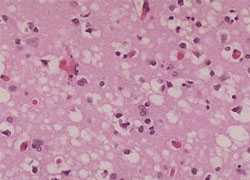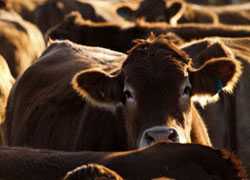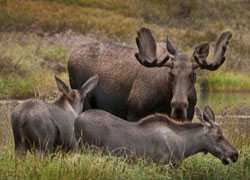Prion diseases or transmissible spongiform encephalopathies (TSEs) are a family of rare progressive neurodegenerative disorders that affect both humans and animals. They are distinguished by long incubation periods, characteristic spongiform changes associated with neuronal loss, and a failure to induce inflammatory response.
The causative agents of TSEs are believed to be prions. The term “prions” refers to abnormal, pathogenic agents that are transmissible and are able to induce abnormal folding of specific normal cellular proteins called prion proteins that are found most abundantly in the brain. The functions of these normal prion proteins are still not completely understood. The abnormal folding of the prion proteins leads to brain damage and the characteristic signs and symptoms of the disease. Prion diseases are usually rapidly progressive and always fatal.
Identified Prion Diseases
Listed below are the prion diseases identified to date. CDC does not currently offer information on every prion disease listed below.
Human Prion Diseases
- Creutzfeldt-Jakob Disease (CJD)
- Variant Creutzfeldt-Jakob Disease (vCJD)
- Gerstmann-Straussler-Scheinker Syndrome
- Fatal Familial Insomnia
- Kuru
Animal Prion Diseases
- Bovine Spongiform Encephalopathy (BSE)
- Chronic Wasting Disease (CWD)
- Scrapie
- Transmissible mink encephalopathy
- Feline spongiform encephalopathy
- Ungulate spongiform encephalopathy
CJD (Creutzfeldt-Jakob Disease, Classic)
vCJD (Variant Creutzfeldt-Jakob Disease)
BSE (Bovine Spongiform Encephalopathy)
CWD (Chronic Wasting Disease)
Related Links
Publications
-
The Public Health Impact of Prion Diseases [PDF – 191KB]
Belay E., Schonberger L. Annu. Rev. Public Health2005;26:191-212 -
Transmissible Spongiform Encephalopathies in Humans [PDF – 183KB]
Belay E. Annu. Rev. Microbiol. 1999;53:283-314 - WHO infection control guidelines for transmissible spongiform encephalopathies. Report of a WHO consultation, Geneva, Switzerland, 23-26 March 1999
E-Mail Us
For Questions or Comments on Prions E-mail Us.
BSE/TSE Action Plan
BSE/TSE Action Plan of the Department of Health and Human Services (DHHS) has four major components:
- Surveillance for human disease is primarily the responsibility of CDC.
- Protection is primarily the responsibility of the Food and Drug Administration (FDA).
- Research is primarily the responsibility of the National Institutes of Health (NIH).
- Oversight is primarily the responsibility of the Office of the Secretary of DHHS.
For additional information, see the August 23, 2001 HHS press release, HHS Launches Expanded Plan to Combat “Mad Cow Disease”.
- Page last reviewed: February 5, 2015
- Page last updated: August 17, 2017
- Content source:


 ShareCompartir
ShareCompartir



